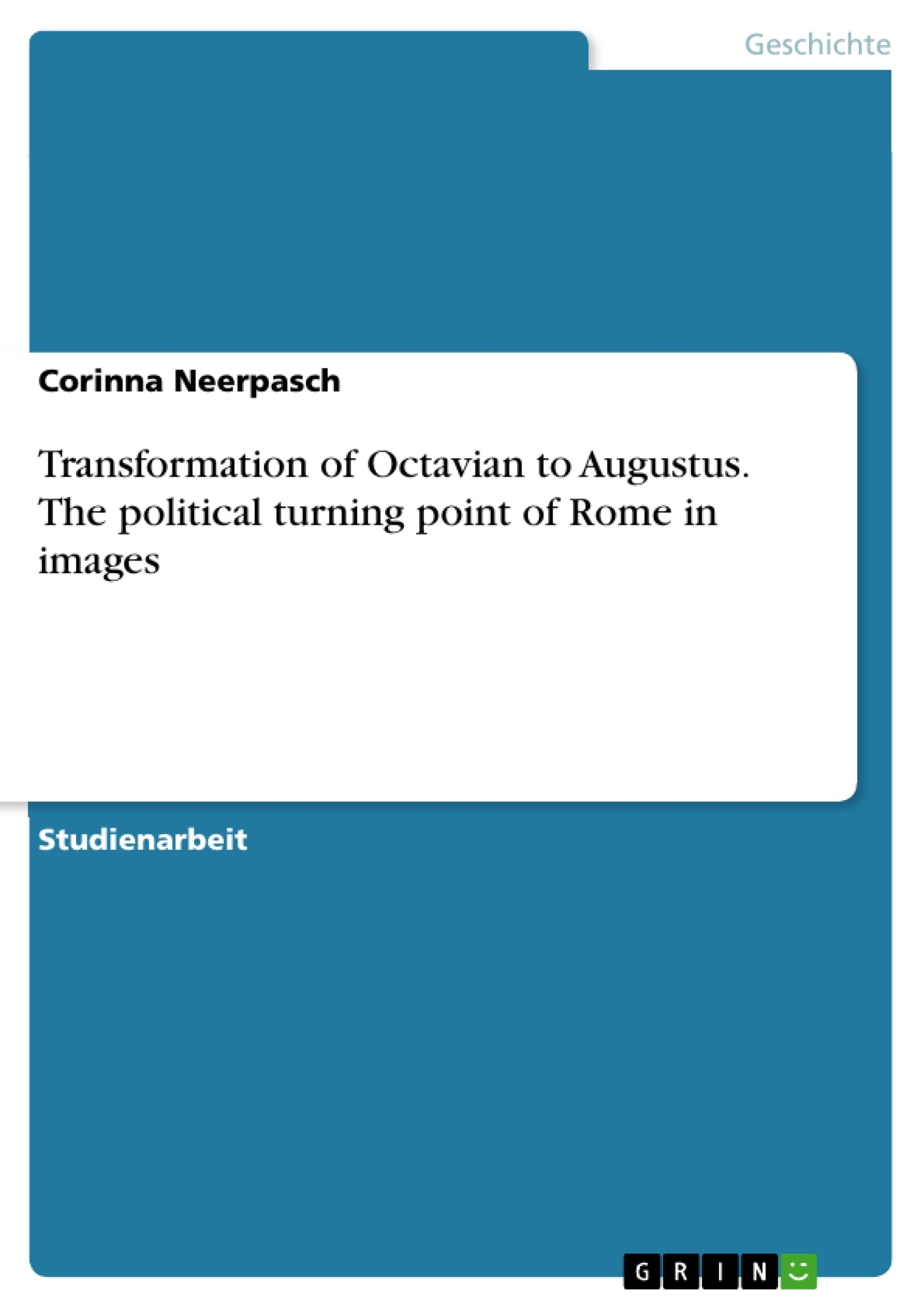We can read from images how the culture and comprehension of the world used to be in this time. They are historic documents. Each found picture, coin or statue is a piece of a huge puzzle which is to be solved and which leads us to a better understanding of history.
Besides, they show us the power they had and how one who can use them wisely, can influence and educate the masses with their help.
Art and architecture are mainly the only hint of passed times.
It is no question that Imperator Caesar Divi Fiulius Augustus reformed the whole visual language. But he did not only change and improve it, but also used it for his benefits. By means of images the political turning point in Rome and the whole Empire is clear to see. He led the Roman Empire into a glory time (saeculum augustum) and gave the masses new art, architecture and a totally improved townscape.
Inhaltsverzeichnis (Table of Contents)
- I. Introduction
- II. Imperator Caesar Divi Filius Augustus
- III. The Transformation of Octavian to Augustus
- OCTAVIAN: The Battle of Autarchy
- Divi Filius - Self-glorification and Demonstration of Power
- AUGUSTUS: Policy of Peace and the Restorations of the Republic
- Cultural Renovation of the City of Rome
- IV. Conclusion
Zielsetzung und Themenschwerpunkte (Objectives and Key Themes)
Die Arbeit analysiert die Transformation von Octavian zu Augustus und die damit verbundenen Veränderungen in der römischen Gesellschaft. Sie untersucht, wie Octavian durch politische Strategien, Propaganda und die gezielte Nutzung von Bildern und Symbolen, seine Machtposition festigte und sich letztendlich zum ersten römischen Kaiser erhob. Die Arbeit beleuchtet die Schlüsselrolle von Octavian im Kampf um die Alleinherrschaft und die Umwandlung der römischen Republik in ein Imperium.
- Die Transformation von Octavian zu Augustus
- Die Rolle der Propaganda und der Selbstdarstellung
- Die Bedeutung von Bildern und Symbolen in der römischen Politik
- Der Kampf um die Alleinherrschaft und die Machtstrukturen in der römischen Republik
- Die kulturelle Erneuerung Roms unter Augustus
Zusammenfassung der Kapitel (Chapter Summaries)
Die Einleitung beleuchtet die Bedeutung von Kunst und Architektur als historische Dokumente und veranschaulicht ihre Rolle als Spiegel der Kultur und Weltanschauung einer Gesellschaft. Kapitel II. stellt Imperator Caesar Divi Filius Augustus als den ersten Kaiser und Gründer des Römischen Reiches vor. Es beleuchtet seine Herkunft, seine Adoption durch Julius Caesar und den Beginn seiner Machtergreifung. Kapitel III. analysiert die Transformation von Octavian zu Augustus. Es zeigt, wie Octavian durch brutale Mittel und Selbstdarstellung zur Macht kam, während Augustus als friedlicher und geschätzter Herrscher dargestellt wird. Der Abschnitt "OCTAVIAN: The Battle of Autarchy" behandelt die Machtkämpfe nach dem Tod Caesars und Octavians Aufstieg zur Alleinherrschaft. Der Abschnitt "Divi Filius - Self-glorification and Demonstration of Power" konzentriert sich auf Octavians geschickte Nutzung von Bildern und Symbolen, um seine Macht zu festigen und sein Image zu beeinflussen.
Schlüsselwörter (Keywords)
Die Arbeit befasst sich mit den Schlüsselbegriffen Macht, Propaganda, Selbstdarstellung, Bilder und Symbole, Transformation, Republik, Imperium, Caesar, Augustus, Römische Geschichte, Politik und Kultur.
- Quote paper
- Corinna Neerpasch (Author), 2015, Transformation of Octavian to Augustus. The political turning point of Rome in images, Munich, GRIN Verlag, https://www.grin.com/document/337784



